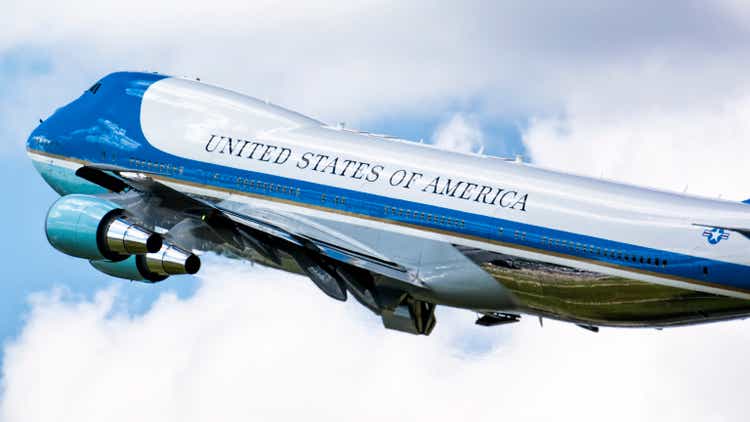- Joined
- 9 October 2009
- Messages
- 19,884
- Reaction score
- 10,392
https://www.flightglobal.com/news/articles/usaf-studies-neat-replacement-for-e-4b-e-6b-and-c-3-450842/
A newly-posted solicitation document combines plans for replacing three separate US military aircraft fleets flown today by three different Boeing types into a single programme.
The 747-200-derived E-4B, 707-based E-6B and 757-based C-32A could all be replaced under the US Air Force’s proposed NEAT programme.
The NEAT acronym combines the first letter of the acronyms that define the missions for each of the three platforms it could replace. Those are the E-4B’s National Air Operations Center (NAOC) mission, the C-32A’s Executive Airlift role and the E-6B’s dual assignments as an airborne command post (ABNCP) and take-charge and move-out (TACAMO) platform.
The US Air Force Materiel Command on 31 July published a request for information to support an analysis of alternatives (AoA) for the NEAT programme.
Such an analysis usually takes more than a year to complete. In the Pentagon’s elaborate acquisition planning process, the AoA is used to inform the proposed acquisition strategy, which, if accepted by the Joint Requirements Oversight Council, often proceeds to a competitive acquisition.
The request for information reveals nothing about the possible platforms on the USAF’s shopping list. The document asks for companies to respond to general questions about their experience, software development process and a description of their “recommended technical solution”.
The USAF fleet includes four E-4Bs and four C-32As. Two US Navy squadrons based at Tinker AFB, Oklahoma, operates 16 E-6Bs, a platform used to communicate with US submarines, bombers and missile silos in a nuclear war. In the TACAMO role, the E-6B deploys an 8,530m (28,000ft) trailing wire antenna and a 1,520m “short” trailing wire antenna to communicate with submerged ballistic missile-carrying submarines. The E-6B also inherited the “Looking Glass” airborne command post mission after the USAF retired a fleet of EC-135s.
The RFI document emerges nearly four months after Gen Robin Rand, commander of Air Force Global Strike Command, told a Senate committee during a hearing that it was time to get “very serious” about acquiring a replacement for the E-4B and E-6B fleets.

